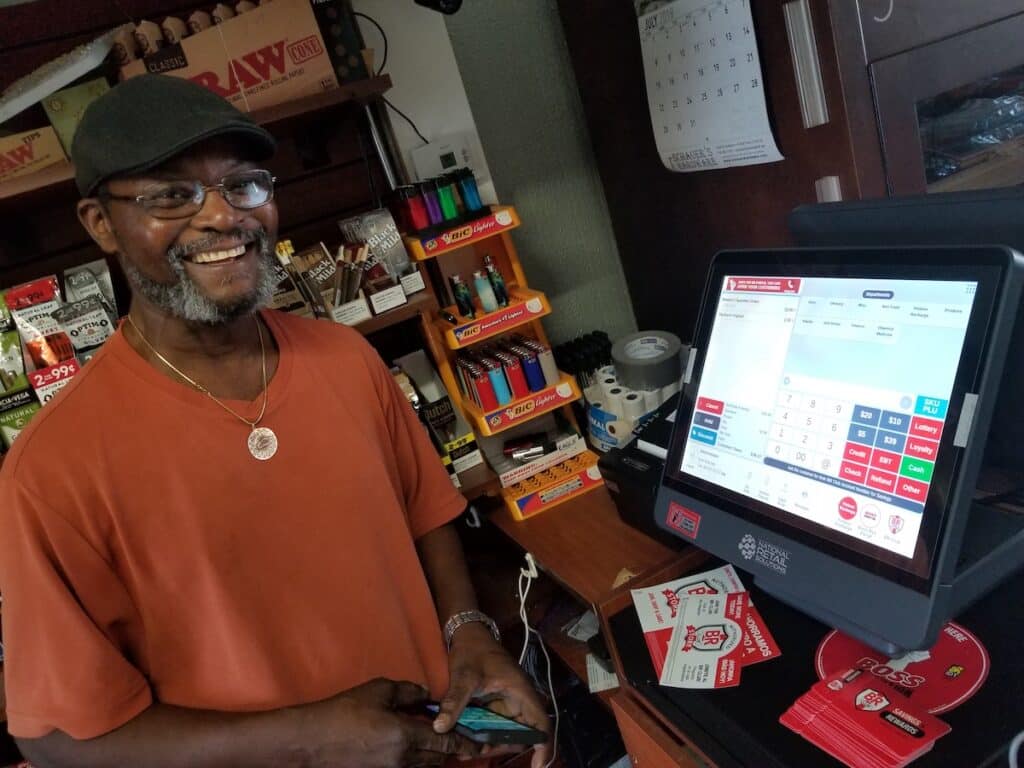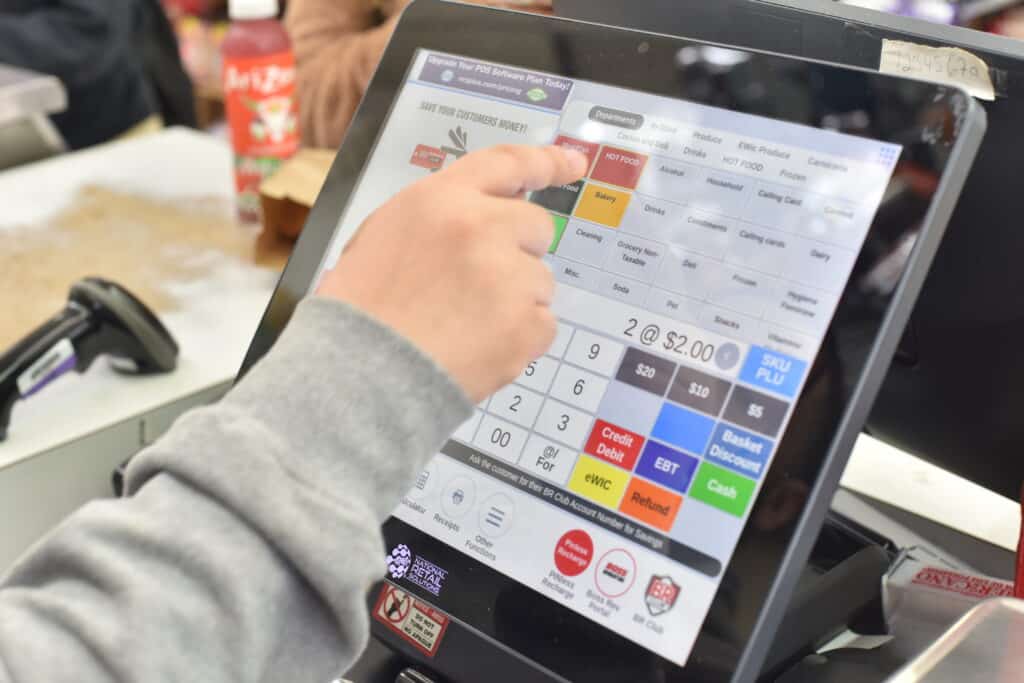Steps to Find the Right POS Hardware for Your Business:
| Step | Key Takeaway |
| Step 1: Define Business Needs | Assess transaction types, business volume, and growth targets to align with POS hardware for your business. |
| Step 2: Understand Core Hardware Options | Choose essential components like tablets and card readers based on operational needs. |
| Step 3: Identify Enhancing Add-Ons | Add features like customer-facing displays and signature pads for enhanced operational efficiency. |
| Step 4: Focus on Usability and Integration | Prioritize ease of use, scalability, and seamless integration with other business tools. |
| Step 5: Vendor Research and Cost Comparison | Research vendors thoroughly, compare costs, and experience systems through demos for informed decision-making. |
Getting the right Point of Sale POS hardware for your business can often be daunting for retailers, big and small.
Selecting the ideal POS system goes beyond mere transaction handling; it’s about choosing a solution that perfectly meets your business’s needs.
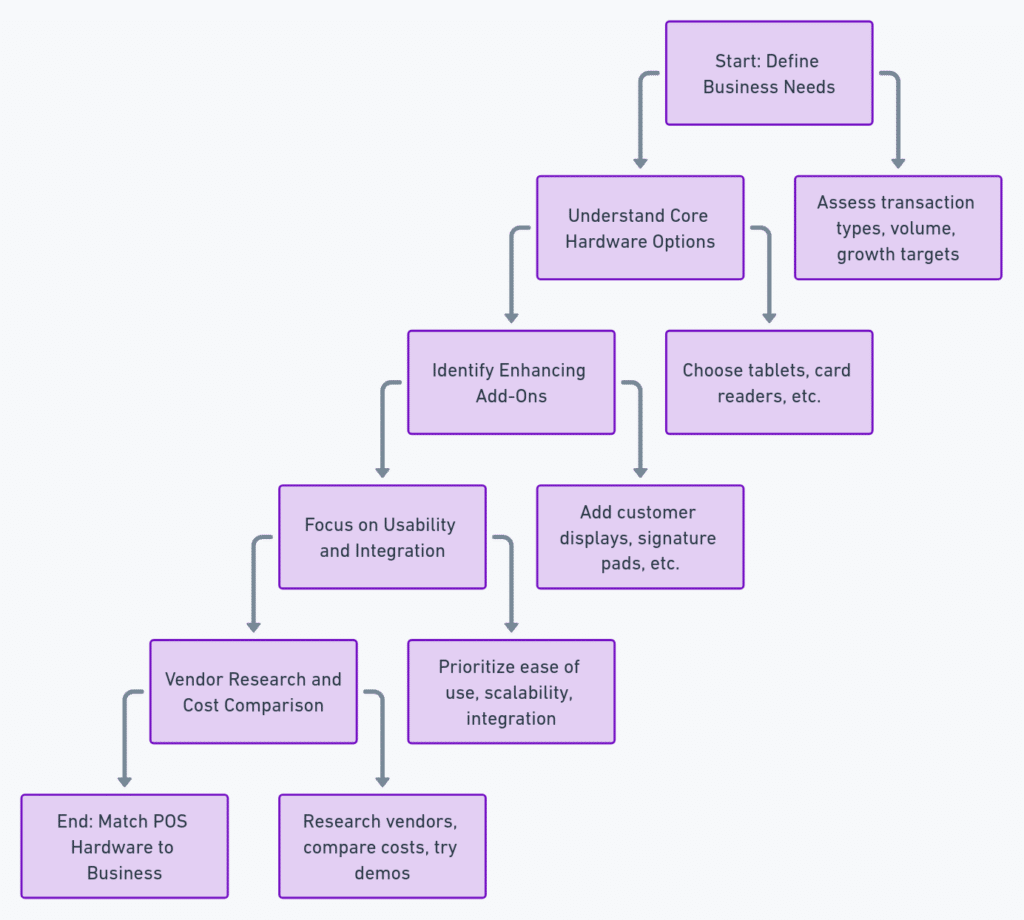
The sheer number of systems and components can be dizzying. That’s why we provide a step-by-step guide to identifying the best hardware for your business.
Step 1: Define Your Business Needs and Goals
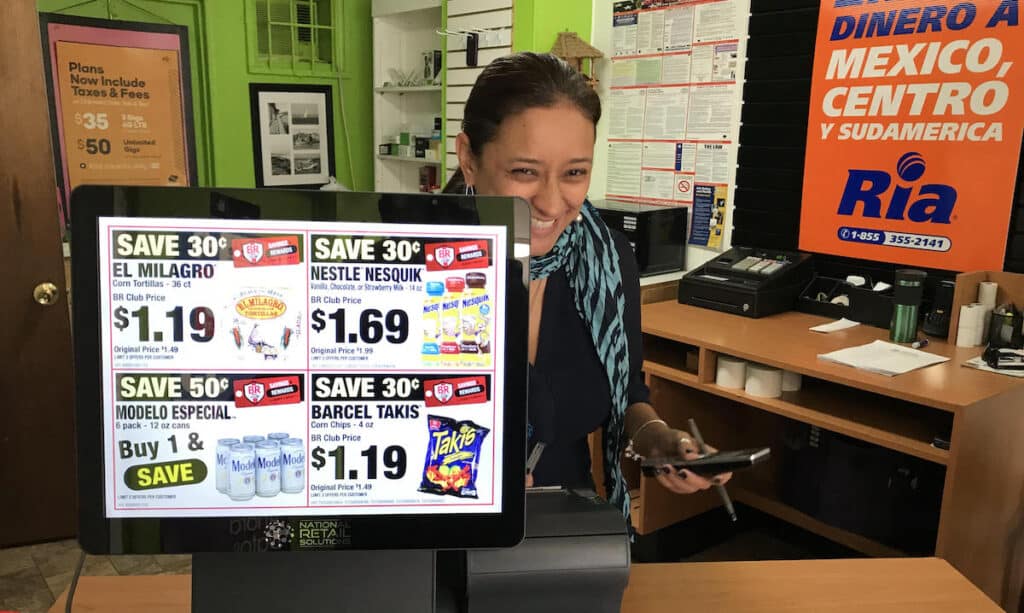
- Assess daily transaction types: cash, card, or digital payments.
- Evaluate business volume: Choose components that match your daily transaction load.
- Set growth targets: Ensure your system can scale with your business.
Understanding your business needs and goals is crucial when selecting retail POS hardware. Start by assessing your daily transaction types.
Are you dealing mostly with cash, cards, or digital payments? Knowing this helps pinpoint the right kind of POS equipment for your business. Also, evaluate your business volume.
If running a high-volume store, your POS system must be robust and efficient to handle the heavy workload.
Pro Tip: Don’t think of POS hardware as a cost — it’s a tool that will pay for itself many times over. The right system will save time, boost accuracy, and create happier customers.
Ask yourself: What challenges do you want your hardware to solve? For some, it might be about speeding up the checkout process. For others, it might involve integrating with inventory management systems.
- Identify key business challenges: Speeding up checkout, integrating systems, etc.
- Define long-term business strategy: Align system choice with future goals.
- Consider integration needs: Ensure compatibility with existing business systems.
Step 2: Understand the Core POS Equipment Options
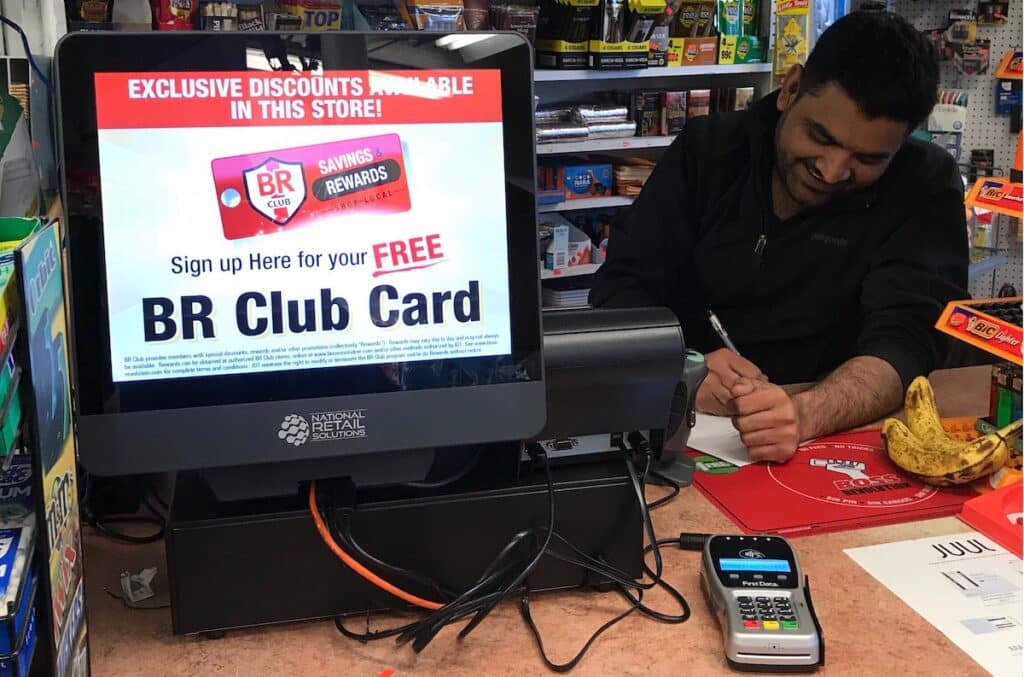
- Tablets and stands: Essential for a flexible and portable setup.
- Card readers: Crucial for processing all types of card and digital payments.
Choosing the right components for your sales system is essential. Start with the basics: tablets and stands. These are the backbone of modern systems, offering flexibility and portability.
For instance, a tablet-based setup is ideal if your business is on the move. Next, consider card readers. They are essential in a world where digital and card payments are king.
- Barcode scanners and printers: Streamline checkout and inventory management.
- Cash drawers: Secure cash handling for businesses accepting cash payments.
- Match hardware to operational needs: Ensure compatibility with your business type.
Pro Tip: Ensure your choice supports magstripe, EMV, and NFC technologies to cater to all customer preferences.
Barcode scanners and printers are vital, especially when managing a large inventory. They streamline the checkout process and keep your stock in check.
Don’t forget about cash drawers if you’re accepting cash payments. A secure and compatible cash drawer is necessary for handling and safeguarding cash transactions.
Step 3: Identify Add-Ons That Can Enhance Your Operations
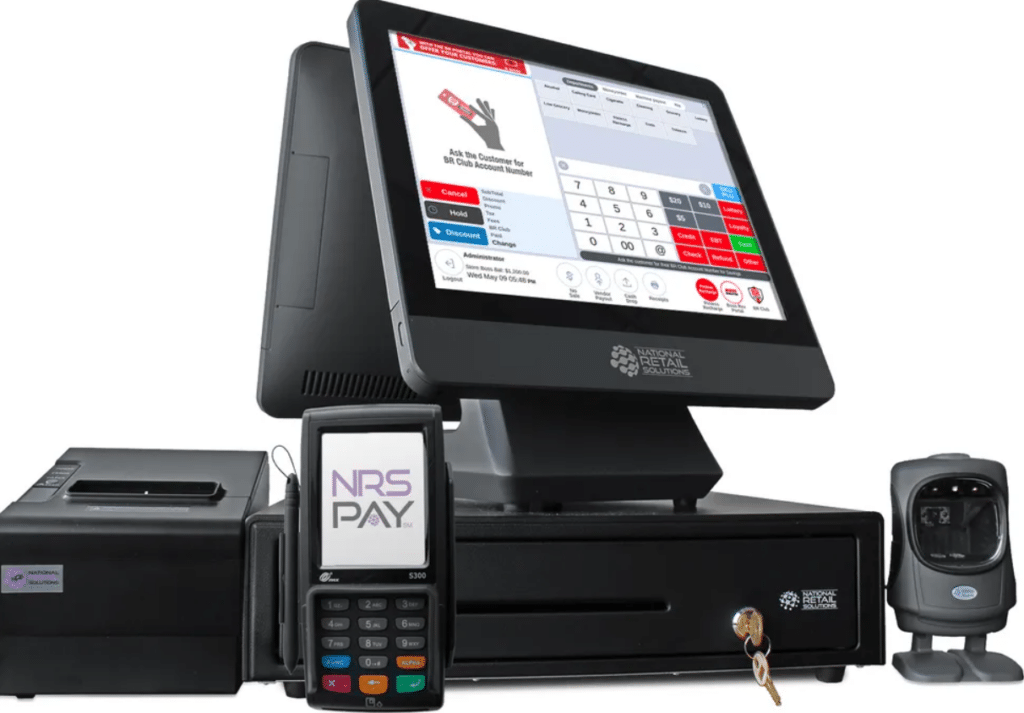
- Customer-facing displays: Boost engagement in quick-service settings.
- Signature pads: Add security for service-oriented businesses.
Add-ons can significantly boost your sales system’s functionality. For instance, customer-facing displays are great for coffee shops and fast-food joints. They enhance customer engagement and transparency during transactions.
Signature pads are another useful add-on, especially for service-oriented businesses like salons or spas. They add a level of security and professionalism to each transaction.
- Receipt and report printers: Cater to customers preferring physical copies.
- Network devices: Maintain a stable and efficient system connection.
The right add-ons depend on your business type and customer needs.
Consider printers for receipts and reports. While digital receipts are popular, many customers still prefer physical copies. Also, think about network devices.
A robust Wi-Fi router or network switch ensures your system stays connected and efficient, which is crucial for smooth operations.
Step 4: Prioritize Ease of Use, Scalability, and Integration
Ease of use is key for any sales system. It should be simple for both your staff and customers. A user-friendly interface reduces training time and minimizes errors at checkout. Look for systems with intuitive navigation and straightforward features.
- User-friendly interface: Simplifies operations for staff and customers.
- Reduce training time: Choose systems that are easy to learn and use.
- Minimize checkout errors: An intuitive system helps avoid mistakes.
Scalability is crucial for growing businesses. Your system should grow with your business, handling increased transactions without a hitch.
This means looking for systems that can easily integrate with additional hardware or software as your business expands. Also, consider its ability to manage higher transaction volumes over time.
- Scalability: Ensure the system can handle business growth.
- Easy integration: Look for systems adapting to new hardware or software.
- Manage higher volumes: The system should sustain increased transaction loads.
Integration capabilities are also vital. Your sales system should seamlessly work with other tools like inventory management and accounting software.
- Streamline operations: Integration with other business tools is essential.
- Save time and reduce errors: Integrated systems simplify management.
- Enhanced business insights: A cohesive system offers better operational visibility.
Choosing a system that excels in these areas will set a solid foundation for your business operations, ensuring functionality and long-term success.
Step 5: Research Vendors, Compare Costs, and Get Demos
- List reputable vendors: Focus on quality and reliability.
- Check track records: Ensure they have experience in your retail niche.
- Read reviews: Customer feedback provides insights into their service quality.
Researching vendors is critical in choosing your sales system. Start by listing providers known for quality and reliability. Look for vendors with a solid track record in your retail niche.
Read customer reviews and testimonials to gauge their reputation. This helps ensure you choose a vendor that understands and can meet the specific needs of your business.
Comparing costs is equally important. Gather pricing information from different vendors and analyze what each package includes.
Don’t just look at the upfront costs; consider long-term expenses like updates, support, and additional hardware or software requirements. Some vendors offer free demos.
Take advantage of these to get a hands-on feel of the system. Demos also allow you to ask specific questions and see if the system fits your business needs.
- Analyze pricing: Consider both upfront and long-term costs.
- Compare packages: Look at each vendor’s pricing plans.
- Try demos: Get a firsthand experience of the systems you’re considering.
Matching Your POS Hardware to Your Business
Choosing the proper equipment for your sales system is not just a technical decision; it’s a strategic one that can dramatically impact your operations and customer experience. The specific demands of your industry play a crucial role in this choice.
Tailoring your hardware selection to your specific industry ensures smoother operations, enhances customer interactions, and positions your business for success in its niche.
| Store Type | Core Needs | Recommendations |
| Convenience Stores, Grocery Stores, Supermarkets | Fast barcode scanning, scales, large volume capacity, self-checkout integration | Robust POS terminals, high-speed scanners, label printers, heavy-duty cash drawers, customer-facing displays |
| Liquor Stores | Age verification, restricted inventory control, state-mandated reporting | ID scanners, software with age verification, inventory controls for regulated products |
| Tobacco Stores | Age verification, specialized inventory for diverse tobacco products | ID scanners, barcode scanners for small labels, inventory management for various tobacco products |
| Delis | Scales for deli counter sales, kitchen display systems for food prep | Integrated scales, KDS for significant food preparation operations |
| Bakeries | Scales for items sold by weight, ingredient-level inventory tracking | Integrated scales, software with recipe/ingredient management, customer-facing displays for promotions |
| Dollar Stores | Streamlined checkouts for high-volume, low-priced items, robust inventory management | Fast terminals and barcode scanners, inventory software for vast SKUs |
| Gas Stations | Quick handling of gas and store sales, age verification for certain sales | POS system connecting to gas pumps, built-in ID scanning |
| Hardware Stores | Extensive inventory management, customer-facing product lookup | software with robust inventory features, barcode scanners, self-service kiosks |
Conclusion
Selecting the proper hardware for your sales system is a strategic investment in your business’s future, not just an expense.
The decision shapes your operational efficiency, customer experience, and business growth. It’s about finding a solution that meets today’s needs while adapting to tomorrow’s challenges.
Checklist for Hardware Selection:
The right choice in retail POS hardware paves the way for streamlined operations, enhanced customer interactions, and sustained business growth.
- Define Business Needs: Assess transaction types, volume, and growth goals.
- Understand Hardware Options: Choose core components like tablets and card readers.
- Identify Enhancing Add-Ons: Add features like displays and signature pads for efficiency.
- Focus on Usability: Prioritize intuitive interfaces for ease of staff training.
- Research and Compare: Thoroughly research vendors, compare costs, and try demos.
- Consider Industry-Specific Needs: Tailor equipment to the specific demands of your niche.
- Evaluate Scalability and Integration: Ensure the system grows with your business and integrates seamlessly with other tools.
FAQ:
What hardware is needed for a POS system?
The essential checkout system includes a central terminal, card reader, receipt printer, and cash drawer. Depending on your specific business type, additional components like barcode scanners, scales, or customer-facing displays may be needed.
What are the five point-of-sale hardware components?
The core components typically include a central terminal (computer, tablet, or all-in-one device), card reader, barcode scanner, receipt printer, and cash drawer. Some businesses may require additional equipment like scales or customer-facing displays, depending on their needs.
Can I use my existing computer or tablet as a point-of-sale terminal?
Yes, many software providers offer solutions that turn tablets or computers into functional terminals. This option can be cost-effective, but ensure the hardware meets your business’s speed, durability, and connectivity requirements.
What’s the difference between cloud-based and traditional POS systems?
Cloud-based systems store your data offsite, accessible from anywhere with an internet connection. Traditional systems store data locally on your hardware. Cloud-based systems offer flexibility and remote access but come with subscription fees, while conventional systems have higher upfront costs.
What kind of support and maintenance should I expect from a vendor?
Before purchasing, inquire about the vendor’s support hours, response times, and if they offer on-site support for critical issues. Also, ask about warranties and if they provide ongoing software updates and security patches.
